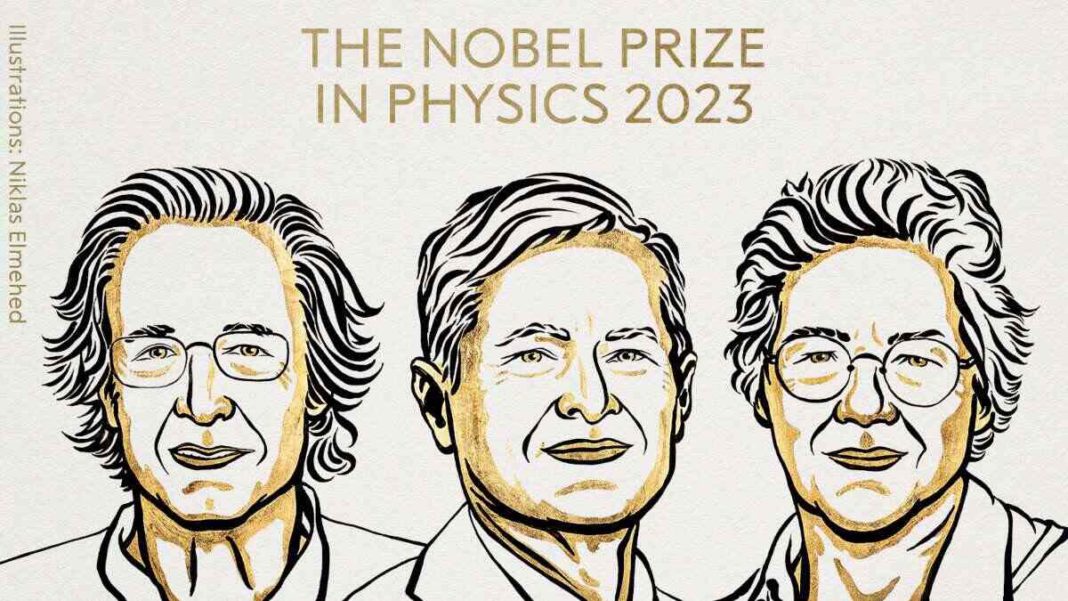SWEDEN: In a momentous announcement, the Royal Swedish Academy of Sciences has awarded the prestigious 2023 Nobel Prize in Physics to Pierre Agostini, Ferenc Krausz, and Anne L’Huillier for their groundbreaking contributions to the field of experimental physics.
The trio’s pioneering work has ushered in a new era of scientific exploration, enabling the study of electron dynamics within matter at previously unimaginable timescales.
The Nobel committee’s decision to honor Agostini, Krausz, and L’Huillier with this prestigious accolade is a testament to their remarkable achievements in pushing the boundaries of scientific knowledge. Their inventive methods have provided humanity with invaluable tools for peering into the intricate world of electrons within atoms and molecules.
At the core of their research lies the development of attosecond pulse technology, which has opened doors to studying ultra-fast processes in which electrons move and change energy levels. These processes, occurring in mere billionths of a billionth of a second (attoseconds), were once inscrutable but are now within the reach of scientific investigation.
L’Huillier’s contribution to this groundbreaking work came in the form of a revelation involving the interaction of laser light with atoms in a gaseous state. This discovery laid the foundation for creating shorter pulses of light than had previously been attainable.
Agostini and Krausz further advanced this effect, demonstrating its practical applications in generating extraordinarily brief flashes of light. These attosecond pulses now allow scientists to capture snapshots of electrons’ astonishingly rapid movements, shedding light on previously hidden facets of the subatomic realm.
This prestigious Nobel Prize in Physics follows hot on the heels of the Nobel Prize in Medicine announcement, awarded just a day earlier to Katalin Karikó and Drew Weissman for their pivotal contributions to developing mRNA vaccines against COVID-19.
The Nobel announcements are set to continue in the coming days, with the Chemistry Prize scheduled for Wednesday and the Literature Prize for Thursday. The Nobel Peace Prize will be unveiled on Friday, and the Economics Award on October 9.
Each Nobel Prize carries a substantial cash award of 11 million Swedish kronor ($1 million), funded by a legacy left by the prize’s visionary founder, Swedish inventor Alfred Nobel, who passed away in 1896. This year, in response to the devaluation of the Swedish currency, the prize money has been augmented by an additional 1 million kronor.
The laureates have been cordially invited to accept their well-deserved awards at ceremonies scheduled for December 10, commemorating the anniversary of Alfred Nobel’s passing. While the Nobel Peace Prize ceremony takes place in Oslo by Alfred Nobel’s wishes, the ceremony for the other Nobel categories will be held in Stockholm, celebrating the remarkable achievements of these pioneering scientists in the heart of the scientific community.
Also Read: American and Hungarian Scientists Awarded Nobel Prize for mRNA COVID-19 Vaccine Research



